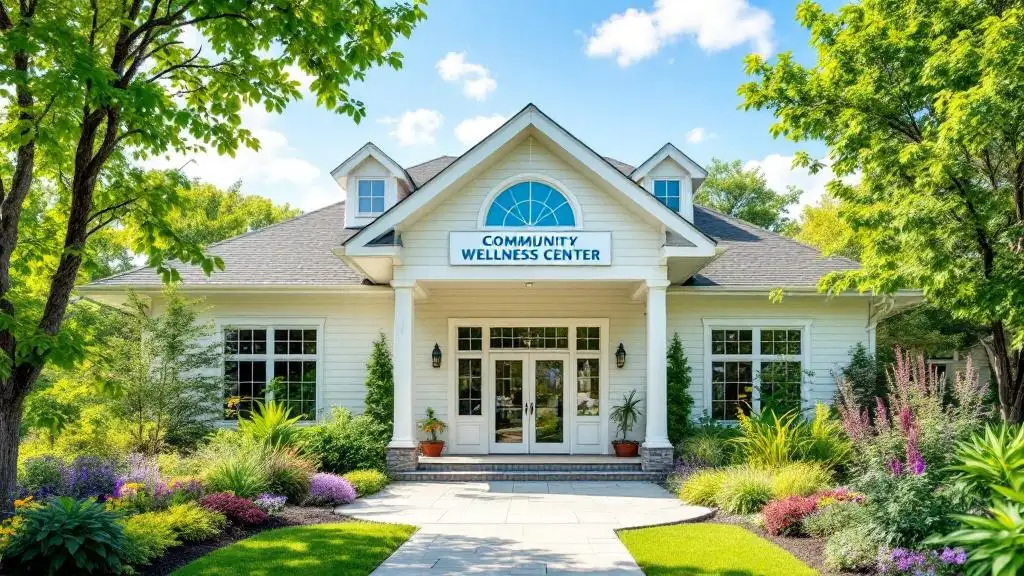Supporting Seniors With Stepwise Guidance for Health Behavior Changes

The Growing Importance of Personalized Wellness for Aging Populations
As the global population ages, supporting seniors in adopting and maintaining healthy lifestyle behaviors is critical to preventing chronic diseases and improving quality of life. Despite abundant evidence underscoring the benefits of physical activity, balanced nutrition, and behavioral health programs, many older adults remain inactive and face challenges in managing multiple health conditions. This article explores effective wellness programs, sustainable weight loss strategies, and the design of care initiatives that provide stepwise guidance uniquely suited to seniors' preferences and needs.
Understanding the Health Challenges Faced by Older Adults

What health challenges do aging adults face that affect wellness?
Aging adults commonly experience a high prevalence of chronic diseases, including heart disease, diabetes, arthritis, obesity, stroke, and cancer. Many seniors must manage multiple chronic conditions simultaneously, complicating their health status and daily functioning.
Managing these multiple conditions often requires complex medication routines, frequent healthcare visits, and lifestyle adaptations. The presence of chronic diseases frequently limits physical capabilities and increases vulnerability to additional health complications.
These challenges directly impact wellness by increasing the need for personalized approaches. Wellness programs must accommodate the diverse and often overlapping health needs of older adults, integrating physical activity, nutrition, disease management, and mental health support.
Designing wellness activities with these challenges in mind allows for better engagement, improved chronic disease management, and enhanced quality of life among older adults.
The Role of Physical Activity in Healthy Aging

Why is physical activity essential for older adults?
Regular physical activity is crucial for older adults as it significantly enhances cardiovascular health, mental well-being, and social engagement. It strengthens bones and muscles, which helps reduce the risk and progression of chronic illnesses such as heart disease, stroke, diabetes, arthritis, and obesity. Furthermore, staying active supports independence, reduces fall risks, and can lower healthcare costs while improving overall quality of life.
Recommended physical activity levels and current participation
Health guidelines recommend that older adults engage in 150 to 300 minutes of moderate aerobic activity weekly, combined with muscle-strengthening exercises at least twice per week. Despite these recommendations, less than 15% of Americans aged 65 and older meet the suggested levels for aerobic and muscle-strengthening activities. This low participation underscores a critical gap in achieving optimal health outcomes for seniors.
Barriers to physical activity in seniors
Several barriers prevent older adults from maintaining regular physical activity. Capability-related challenges include chronic health conditions, pain, and physical limitations. Opportunity-related issues involve social isolation, limited access to facilities, and unsuitable environments. Motivation barriers such as fear of falling, low self-efficacy, societal biases, and the perception that it's too late to start also hinder engagement.
Strategies to increase activity
Addressing these barriers requires multi-level strategies. Policy, systems, and environmental approaches can create supportive spaces for activity. Behavioral interventions incorporating cognitive-behavioral techniques, motivational interviewing, and goal-setting have shown success. Community-based programs, healthcare provider engagement, and use of technology like pedometers and smart bracelets support self-monitoring and motivation. Promoting physical activity in settings like community centers, healthcare facilities, and homes involves all stakeholders—from policymakers to individuals—to foster healthier aging populations.
Nutrition and Dietary Guidance for Seniors' Wellness

What nutritional considerations support healthy aging?
Proper nutrition is essential for older adults to maintain their functional status and overall well-being. Diets rich in variety and nutrient-dense foods, while low in added sugars, saturated fats, and sodium, support healthy aging by preventing common complications such as malnutrition, sarcopenia (loss of muscle mass), fractures, and frailty.
Importance of proper nutrition
As aging adults face physiological changes and chronic conditions, their dietary needs become more specific. Adequate intake of protein, calcium, vitamin D, and other micronutrients supports musculoskeletal health crucial for mobility and independence. Malnutrition among seniors is linked to increased morbidity and mortality, highlighting the need for attention to nutritional status beyond just measuring body mass index (BMI). Comprehensive assessments including waist circumference and nutritional history help clinicians tailor effective dietary plans.
Dietary recommendations for older adults
The 2020–2025 Dietary Guidelines for Americans emphasize balanced eating patterns that include nutrient-rich foods suitable for older adults to maintain health and prevent disease. Diets such as the Mediterranean diet, which focuses on fruits, vegetables, whole grains, lean proteins, and healthy fats, have demonstrated reductions in cardiovascular risks and enhancement of quality of life for the elderly.
Risks of malnutrition and sarcopenia
Older adults with inadequate nutrition are more susceptible to muscle loss (sarcopenia), which increases the risk of falls, fractures, and decreased independence. Ongoing chronic conditions, polypharmacy, physical limitations, and social environments significantly impact dietary behaviors and nutritional health outcomes.
Community nutritional supports
To address barriers and ensure food security, community-based resources like home-delivered meal programs and social support networks play a vital role. These resources help older adults maintain adequate nutrition, which is a foundation for successful chronic disease management and overall wellness.
By focusing on appropriate dietary habits and leveraging community resources, aging adults can better manage their health and sustain functional independence.
Effective Wellness Programs: Components for Comprehensive Health Improvement

What are the most effective wellness programs for overall health improvement?
The most successful wellness programs for aging adults are comprehensive and multicomponent, integrating physical, mental, and emotional health elements. These programs typically include regular physical activity such as walking interventions, strength and balance exercises, and use of self-monitoring devices like smart bracelets to track progress.
Nutrition plays a critical role, with diets emphasizing nutrient-dense foods, limiting added sugars and sodium, and tailored to individuals’ chewing and swallowing abilities. Together with physical activity, a balanced diet supports healthy lifestyles and manages chronic diseases prevalent among older adults.
Mental and emotional health are addressed through stress management strategies, purposeful living activities, and social engagement, often delivered via group sessions, one-on-one coaching, or in-person routines that respect preferences by age and gender.
Personalization and engagement are vital. Effective programs tailor content to individual health needs, behavioral tendencies, and cultural or social contexts. Techniques like patient-centered goal setting, motivational interviewing, and the 5A Model (assess, advise, agree, assist, arrange) facilitate behavior changes. Group formats, peer support, and routine-based structures enhance participation and sustainability.
Integration of these components ensures a holistic approach that promotes not just disease prevention, but also improved quality of life and independence for older adults. Programs such as the PREDIMED trial exemplify success by combining personalized group counseling on Mediterranean diets and physical activity, reducing cardiovascular risks.
In summary, wellness programs that blend tailored physical exercises, nutritious diets, mental health support, and personalized coaching show the greatest promise for significant and lasting health improvements in seniors.
Scientifically Supported Methods for Sustainable Weight Loss in Older Adults
What are the scientifically supported methods for sustainable weight loss?
Sustainable weight loss in older adults centers on multiple, interrelated strategies that prioritize both effectiveness and safety. A balanced dietary approach emphasizing natural, nutrient-dense foods is fundamental. Dietary patterns like the Mediterranean diet, which has demonstrated reductions in cardiovascular events, encourage consumption of fruits, vegetables, whole grains, lean proteins, and healthy fats.
Crucially, caloric restriction should be moderate—about 500 kcal less per day—to produce weight loss while safeguarding musculoskeletal health. Older adults require increased protein intake (approximately 1.2 g/kg/day), along with adequate calcium and vitamin D to protect bone and muscle mass.
Physical activity is an indispensable component, combining aerobic exercises with resistance training at least twice weekly. Such interventions not only aid weight management but also preserve muscle and bone health, essential for functional independence. Exercise programs may include community- or home-based resistance exercises utilizing accessible equipment like resistance bands or household items.
Behavioral approaches complement diet and exercise by focusing on patient-centered goal setting, routine follow-ups, and addressing physiological challenges. Multi-disciplinary teams—including geriatricians, dietitians, and exercise specialists—are recommended to customize and manage these comprehensive programs.
Together, these strategies have shown promise in long-term adherence and outcomes. Moderate caloric restriction balanced with enhanced protein and regular physical activity, underpinned by behavioral counseling, forms a scientifically supported foundation for sustainable weight loss in older adults.
Designing Care Programs to Support Long-Term Wellness and Weight Management
How can care programs be designed to support long-term wellness and weight management?
Effective long-term wellness and weight management programs for older adults focus on a personalized approach that incorporates nutrition, physical activity, and behavioral counseling. Tailored exercise prescriptions, such as walking and strength training, alongside balanced diets emphasizing nutrient density and caloric control, form the foundation for maintaining health and managing weight.
Programs should be multidisciplinary, involving geriatricians, dietitians, exercise physiologists, and behavioral health specialists. This collaborative model allows for comprehensive assessment including musculoskeletal screening and ongoing evaluation to optimize outcomes while preventing muscle or bone loss.
Behavioral counseling frameworks—such as the 5A Model (assess, advise, agree, assist, arrange)—guide structured interactions facilitating goal setting, assisting with motivation, and arranging follow-ups. Community-based programs like the Diabetes Prevention Program demonstrate effectiveness through combining education, peer support, and self-monitoring strategies.
Addressing barriers such as limited access, cultural preferences, and social support is essential. Programs are most successful when culturally tailored and accessible via partnerships between healthcare systems and community organizations. Telehealth and technology, including wearable activity trackers, enhance engagement by supporting self-monitoring and communication.
Integrating wellness programs with chronic disease prevention and management initiatives maximizes impact. Initiatives under Medicare and the Affordable Care Act highlight the importance of preventive counseling and reimbursement, promoting widespread adoption. These programs improve not only physical health but also mental and social well-being, contributing to overall quality of life in aging adults.
| Component | Description | Significance |
|---|---|---|
| Personalized Nutrition | Balanced diets with adequate protein, vitamins, and minerals | Supports weight management and prevents malnutrition |
| Physical Activity | Walking, strength, balance, and flexibility exercises | Maintains muscle, bone health, and mobility |
| Behavioral Counseling | 5A Model and motivational interviewing | Facilitates goal setting, adherence, and lifestyle change |
| Multidisciplinary Team | Geriatricians, dietitians, exercise physiologists | Provides tailored, comprehensive care |
| Community Partnerships | Integration with local programs and services | Increases access and sustainability of wellness efforts |
| Technological Supports | Wearable devices and telehealth | Enhances monitoring, motivation, and provider communication |
| Policy and Reimbursement | Medicare, ACA initiatives | Encourages adoption and financial feasibility |
Health Coaching and Behavior Change Techniques for Seniors
How does health coaching support behavior change in seniors?
Health coaching is a personalized approach that helps individuals set and achieve health goals through patient-centered strategies. In seniors, it focuses on realistic and meaningful objectives tailored to their unique health challenges, such as managing multiple chronic conditions. Techniques used promote motivation, confidence, and sustainable behavior changes.
Currently, most health coaching programs primarily target middle-aged adults dealing with single health issues. This limits their direct applicability for older adults who often face complex health profiles requiring more comprehensive support.
Preferences of older adults for wellness programs
Older adults tend to value wellness activities such as healthy eating, purposeful living, physical activity, stress management, and social engagement. Female seniors and those aged 55–64 generally prefer group-based programs with participants of similar age and gender, as well as one-on-one coaching sessions. Conversely, older seniors show less interest in health coaching and internet-based program formats.
Tailoring coaching to improve engagement
Adapting health coaching methods to align with the preferences of aging adults — such as emphasizing in-person interactions, group settings, and convenient routines — can significantly boost participation and effectiveness. Incorporating these preferences into coaching programs helps overcome barriers and fosters sustained healthy behaviors among seniors.
Leveraging Technology: Wearable Devices and Telehealth for Self-Management

How can technology support seniors’ health behavior changes?
Technology plays a vital role in supporting health behavior changes among seniors by offering tools for monitoring, communication, and self-management. Wearable devices like the Garmin Vivosmart HR smart bracelet can track important metrics such as steps taken, distance covered, calories burned, exercise intensity, and sleep quality. This real-time feedback empowers older adults to actively manage their health and stay motivated to maintain regular physical activity.
Telehealth is another powerful approach that enhances the connection between healthcare providers and seniors. It allows for remote health coaching, follow-up visits, and behavioral counseling, ensuring continuous support without the need for frequent in-person appointments. This is particularly beneficial during periods when mobility is restricted or during public health crises such as the COVID-19 pandemic.
By combining wearables with telehealth platforms, seniors experience improved adherence to wellness routines and personalized weight management plans. These technologies facilitate tailored goal setting, progress tracking, and timely interventions from interdisciplinary care teams, which are crucial for sustaining long-term healthy lifestyles in aging populations. Moreover, they reduce common barriers by making health management accessible and convenient.
In conclusion, integrating wearable devices and telehealth services creates a comprehensive support system for older adults, encouraging sustained engagement in physical activity, balanced nutrition, and other health-promoting behaviors.
Community-Based Programs and Their Role in Promoting Healthy Lifestyles

What is the impact of community-based programs on senior health?
Community-based programs play a critical role in promoting healthy lifestyles among older adults, particularly in managing and preventing chronic diseases. The Diabetes Prevention Program (DPP) is one notable example, offering structured interventions that improve diet and physical activity. These initiatives effectively support seniors in adopting healthier habits that lower cardiovascular and diabetes risks.
Diabetes Prevention Program and others
Beyond DPP, programs like Healthy IDEAS focus on depression management, while PEARLS targets quality of life improvements in mental health. SBIRT helps with substance abuse screening, and WRAP® offers illness self-management support. These multifaceted programs address physical, behavioral, and mental health components crucial to healthy aging.
Reach and accessibility
From 2010 to 2024, over 519,000 adults aged 65 and older have participated in chronic disease self-management programs nationwide. State-level efforts include the Pennsylvania Department of Aging's Healthy IDEAS program, which has reached over 120 older adults, and Maryland's Living Well Center of Excellence, which increased engagement during COVID-19. Integration of behavioral health programs like SBIRT into Electronic Health Records has further expanded their accessibility.
Behavioral and mental health integration
The inclusion of behavioral health programs within community-based settings highlights the growing recognition of mental health as vital to overall wellness. Through screening, education, referrals, and activation techniques, these programs support depression and substance abuse management alongside chronic disease care.
Impact on chronic disease management
Community programs foster sustained self-management behaviors that reduce symptoms and prevent disease progression. Their accessibility and adaptability make them essential components in comprehensive care plans, especially for underserved older adults. Partnerships between clinical and community resources ensure continuous support aligning with participants’ unique needs.
Overcoming Barriers to Physical Activity and Wellness Engagement Among Seniors

What barriers prevent older adults from engaging in physical activity and wellness programs?
Older adults often face multiple hurdles that limit their participation in physical activity and wellness programs. These challenges can be broadly categorized into physical, opportunity-related, and motivation-related barriers.
Physically, many seniors deal with chronic conditions, mobility limitations, and pain that restrict their ability to exercise or engage fully in wellness activities. Opportunity-related barriers include social isolation, limited access to safe and convenient exercise facilities, and environmental factors that do not support active lifestyles. Motivation is also a significant challenge; many seniors feel it is too late to start new habits, fear falling during activities, or struggle with low self-efficacy and societal biases about aging.
Strategies to overcome these barriers
Addressing these barriers requires comprehensive, multi-level strategies. Policy and environmental approaches, such as improving community infrastructure and accessibility of spaces for physical activity, create safer and more attractive options for older adults.
Behavior change interventions incorporating cognitive behavioral techniques are effective in enhancing motivation. These include goal setting, motivational interviewing, and support for developing routine-based exercise habits.
Programs designed with group participation or one-on-one coaching tailored to the preferences of seniors, with consideration of age, gender, and existing behaviors, foster higher engagement and adherence.
The role of stakeholders
Promoting physical activity among seniors is a shared responsibility. Policymakers play a role by implementing supportive regulations and funding. Healthcare providers can assess activity levels and counsel patients using frameworks like the 5A Model (assess, advise, agree, assist, arrange) to guide behavior change.
Community organizations offer accessible programs and social support networks that reduce isolation and promote wellness.
Individuals themselves, along with caregivers, can encourage and participate in activities that align with personal preferences and capabilities.
Together, these coordinated efforts enhance opportunities, remove barriers, and boost motivation to improve wellness engagement among older adults.
Monitoring and Sustaining Long-Term Behavior Change in Older Adults

How can providers support sustained health behavior changes in seniors?
Supporting long-term health behavior changes in older adults requires a comprehensive and ongoing approach. Providers can utilize structured frameworks like the 5A Model — which includes assessing readiness, advising, agreeing on goals, assisting with strategies, and arranging follow-ups — to deliver brief and targeted behavior counseling.
Multiple structured visits are often necessary, allowing for regular monitoring and adjustment of goals based on progress. This continuous engagement helps address challenges and reinforces motivation.
Team-based care, involving geriatricians, dietitians, exercise professionals, and behavioral specialists, plays a critical role in sustaining change. Referrals to community programs, such as chronic disease self-management or physical activity initiatives, extend support beyond clinical settings and promote adherence through social engagement.
Addressing adherence also means recognizing physiological and psychological challenges faced by older adults, including weight regain, mobility issues, and fluctuating motivation levels. Strategies like social support, self-monitoring tools (e.g., wearable devices), and individualized behavioral counseling help mitigate these barriers.
By integrating these components — structured counseling, coordinated multidisciplinary support, community engagement, and ongoing follow-up — providers can better promote sustained healthy behaviors and lasting wellness among older adults.
Towards Holistic and Personalized Support for Senior Wellness
Supporting seniors in health behavior changes requires stepwise, evidence-based approaches that address the multifaceted challenges of aging. Combining tailored physical activity, nutritious diet, behavioral coaching, and leveraging technology within integrative care programs enhances engagement and fosters sustainable improvements. Partnerships among healthcare teams, community organizations, and policymakers are essential to reduce barriers and expand access to proven programs. Empowering older adults with personalized, culturally sensitive resources will ultimately improve their quality of life, independence, and long-term health outcomes.
References
- Aging Adults' Preferences for Wellness Program Activities ...
- Promoting Healthy Behaviors in Older Adults to Optimize ...
- Health Behavior Change Programs in Primary Care and ...
- Implementation Strategies for Older Adults
- Healthy Aging Resources | odphp.health.gov
- Weight Management Planning for Older Adults
- Supporting Healthy Aging With Tailored Obesity ...
- Incorporating Physical Activity Assessments and Behavior ...
- Advancing Behavioral Health Programs for Older Adults
Recent articles
Want to Feel Better and Live Healthier?
Join hundreds of patients taking control of their health with personalized care that fits their life – not the other way around.
Rated 4.8/5 by 32+ customers







